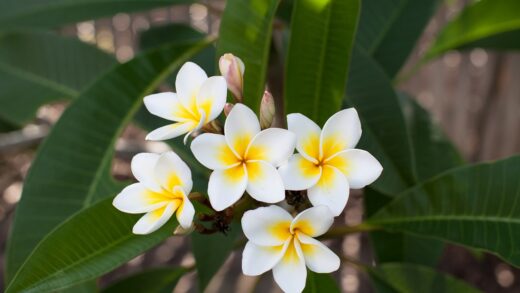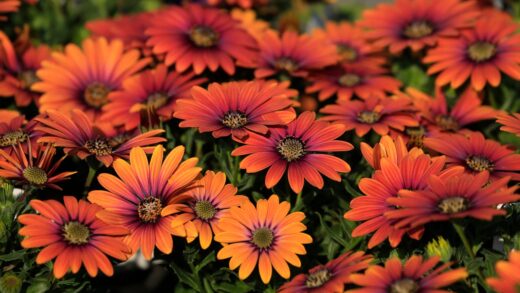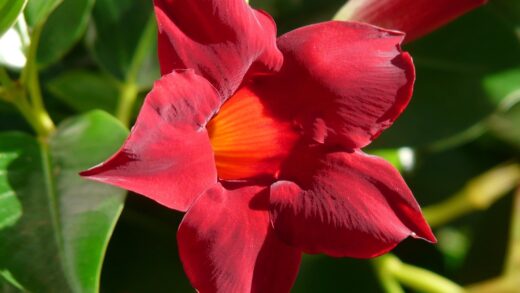One of the most compelling attributes of the trifoliate orange for horticulturists and landscape designers is its remarkable and well-documented resistance to a wide array of pests and diseases. This inherent resilience sets it apart from its more delicate citrus relatives, which are often plagued by numerous issues. The plant’s tough, leathery leaves, formidable thorns, and the chemical composition of its tissues create a natural defense mechanism that deters many common insects and pathogens. This robustness means that in a typical garden setting, a well-sited and properly cared-for trifoliate orange will rarely encounter significant health problems, making it a truly low-maintenance and sustainable choice.
This natural fortitude is a primary reason why Poncirus trifoliata is extensively used as a rootstock in the commercial citrus industry. It imparts its genetic resistance to devastating soil-borne diseases, such as Phytophthora root rot and citrus nematodes, to the more susceptible scions of oranges, lemons, and grapefruits grafted onto it. Its tolerance of cold and a range of soil types are additional traits that make it an invaluable foundation for citrus cultivation worldwide. For the home gardener, this translates into a plant that does not typically require a routine spray schedule or chemical interventions to remain healthy and vibrant.
Despite its impressive defenses, the trifoliate orange is not entirely invincible. Under certain environmental conditions or if the plant is under stress, it can occasionally become susceptible to a limited number of problems. Stress factors such as prolonged drought, waterlogged soil, severe nutrient deficiencies, or physical damage can weaken the plant’s natural defenses, making it a more likely target for opportunistic pests and pathogens. Therefore, the first line of defense is always proactive, preventative care that focuses on providing the plant with its optimal growing conditions.
Vigilance and an integrated approach to garden health are the best strategies for managing any potential issues. Regularly observing the plant for any unusual changes in leaf color, growth habits, or the presence of insects allows for early detection and intervention. Should a problem arise, it can often be managed with simple, environmentally friendly methods, reinforcing the trifoliate orange’s reputation as a resilient and trouble-free garden specimen. The need for harsh chemical treatments is an exceedingly rare event in the life of this hardy plant.
Common pests and their management
While significant pest infestations on trifoliate orange are uncommon, the plant can occasionally host a few common garden pests, particularly when young or stressed. Aphids are one such pest that may be found congregating on the soft, new growth in the spring. These small, sap-sucking insects can cause minor distortion of new leaves, but they rarely pose a serious threat to the plant’s overall health. In most cases, a strong jet of water from a garden hose is sufficient to dislodge them. For more persistent colonies, an application of insecticidal soap can be effective, ensuring thorough coverage of the affected areas.
More articles on this topic
Scale insects are another type of sap-sucking pest that may sometimes appear on the stems and branches of the trifoliate orange. These insects protect themselves with a waxy, shell-like covering, appearing as small, immobile bumps on the plant. A light infestation is often of little consequence, but a heavy one can gradually reduce the plant’s vigor. Scale is best treated during its “crawler” stage in late spring when the mobile young are active. During the dormant season, an application of horticultural oil can be very effective at smothering the overwintering adults and eggs.
Spider mites, which are technically arachnids rather than insects, can become a problem during hot, dry weather. These tiny pests are difficult to see with the naked eye, but their presence is often indicated by a fine webbing on the leaves and a stippled, dusty, or bronzed appearance of the foliage. Like aphids, they feed by sucking plant juices, which can reduce the plant’s vitality if the population becomes large. Increasing humidity by hosing down the plant’s foliage regularly can deter spider mites, and insecticidal soap or horticultural oil are effective control measures for more significant infestations.
The best overall strategy for pest management is to foster a healthy garden ecosystem. By avoiding the use of broad-spectrum pesticides, gardeners can encourage a robust population of beneficial insects, such as ladybugs, lacewings, and predatory wasps. These natural enemies are highly effective at keeping populations of aphids, scale, and mites in check. A healthy, properly watered, and well-nourished trifoliate orange will also have stronger natural defenses, making it far less attractive and susceptible to pests in the first place.
Fungal and bacterial diseases
The trifoliate orange exhibits strong resistance to most serious fungal and bacterial diseases, a key reason for its use as a disease-resistant rootstock. However, the one condition that can pose a significant threat is root rot. This is not a single disease but a general term for the decay of the root system, most commonly caused by water-mould fungi of the Phytophthora genus. This problem is almost exclusively caused by poor growing conditions, specifically soil that is heavy, compacted, and waterlogged. The fungi thrive in anaerobic, saturated soil, attacking and destroying the plant’s roots.
More articles on this topic
The symptoms of root rot in the above-ground parts of the plant can be deceptive, often appearing as if the plant is suffering from drought. The leaves may wilt, turn yellow, and drop, and the branches may experience dieback. This is because the decaying root system is unable to absorb water and nutrients, effectively starving and dehydrating the plant. The only way to confirm root rot is to inspect the roots, which will be dark, mushy, and may have a foul odor, instead of being firm and white. Prevention is the only effective cure; once advanced, root rot is almost always fatal. Ensuring the plant is in well-draining soil from the outset is absolutely critical.
Minor fungal leaf spot diseases may occasionally appear on the foliage, especially during prolonged periods of wet, humid weather. These typically manifest as small, dark, or tan spots on the leaves. While they may be aesthetically displeasing, they rarely cause significant harm to a healthy, mature trifoliate orange. The best management practice is to improve air circulation around and through the plant by proper pruning and spacing. Raking up and disposing of fallen leaves in the autumn can also help to reduce the amount of fungal inoculum that can overwinter and cause infections the following year.
Bacterial diseases are exceedingly rare on this species in a home garden setting. Its natural resilience provides a high level of protection. As with fungal diseases, preventative cultural practices are the most effective strategy. This includes avoiding overhead watering that wets the foliage for extended periods, providing good air circulation, and ensuring that any pruning tools used on the plant are clean and sterilized between cuts, especially if they have been used on other, potentially diseased plants. A healthy plant in a good environment is its own best defense.
Environmental and abiotic issues
Beyond pests and diseases, the health of a trifoliate orange can be affected by environmental or abiotic factors. One of the most common issues, especially in regions with alkaline soil, is iron chlorosis. This is a nutritional disorder caused by a high soil pH that chemically locks up iron, making it unavailable for the plant’s roots to absorb. The classic symptom is interveinal chlorosis, where the leaves turn yellow while the veins remain green. While not a disease, it weakens the plant and can make it more susceptible to other problems. Correcting this involves lowering the soil pH with amendments like elemental sulfur or using chelated iron supplements.
Winter injury is another potential abiotic issue, although the trifoliate orange is renowned for its cold hardiness. Young, newly planted specimens are the most vulnerable, particularly to damage from harsh, drying winds or late spring frosts that occur after the plant has broken dormancy. The tips of branches may die back, and flower buds can be killed by a late frost. To mitigate this, plant in a site with some protection from prevailing winter winds and avoid late-season fertilization that encourages tender new growth. Wrapping a young plant with burlap for its first one or two winters can provide additional protection in very cold climates.
Sunscald can occasionally affect the thin bark of young trifoliate orange trees, particularly on the south or southwest-facing side of the trunk. This occurs in winter when the sun warms the bark during the day, causing cells to become active, only for them to be rapidly frozen and killed when temperatures plummet at night. This results in dead, sunken, or cracked areas of bark. While more common on other types of trees, it can be prevented on young specimens by painting the trunk with a diluted white latex paint or using a commercial tree wrap to reflect the winter sun.
Improper planting depth is a critical abiotic issue that can lead to long-term failure. If a trifoliate orange is planted too deep, with soil and mulch piled up against the trunk, the bark will be kept constantly moist. This can lead to the decay of the bark at the soil line, a condition known as collar rot. This damage girdles the tree, cutting off the flow of water and nutrients between the roots and the canopy, and will eventually kill the plant. It is essential to ensure that the point where the roots begin to flare out from the trunk is visible at the soil surface after planting.
The role of preventative care
The most effective strategy for dealing with diseases and pests in trifoliate orange is to focus on prevention rather than reaction. A healthy, vigorous plant growing in its preferred conditions is inherently more capable of resisting and recovering from any potential problems. This proactive approach begins with proper site selection. Planting in full sun and, most importantly, in well-drained soil eliminates the single greatest threat to the plant’s health: root rot. No amount of chemical treatment can save a plant that is drowning in waterlogged soil.
Proper cultural practices play a continuous role in preventative care. A consistent watering schedule during establishment, followed by appropriate watering for mature plants during severe drought, prevents water-related stress. A balanced fertilization program ensures the plant has the necessary nutrients to build strong tissues and support its immune functions. Mulching helps to maintain consistent soil moisture and temperature while suppressing weeds that may compete for resources or harbor pests. These fundamental horticultural practices form the bedrock of plant health.
Pruning is another key aspect of preventative maintenance. By selectively thinning out dense, crossing, or rubbing branches, a gardener can significantly improve air circulation through the plant’s canopy. This increased airflow allows foliage to dry more quickly after rain, reducing the humid, stagnant conditions that favor the development of fungal diseases like leaf spot. Promptly removing any dead, damaged, or diseased wood as it appears also eliminates potential entry points for pathogens and removes sources of inoculum from the plant.
Ultimately, an integrated pest management (IPM) philosophy is the wisest course of action. This means using observation as the primary tool, correctly identifying any issue before acting, and choosing the least toxic control method possible if intervention is required. It prioritizes cultural and biological controls—like encouraging beneficial insects—over chemical ones. For the remarkably resilient trifoliate orange, this preventative and observant approach is almost always sufficient to ensure a long life of health and beauty in the garden.


















